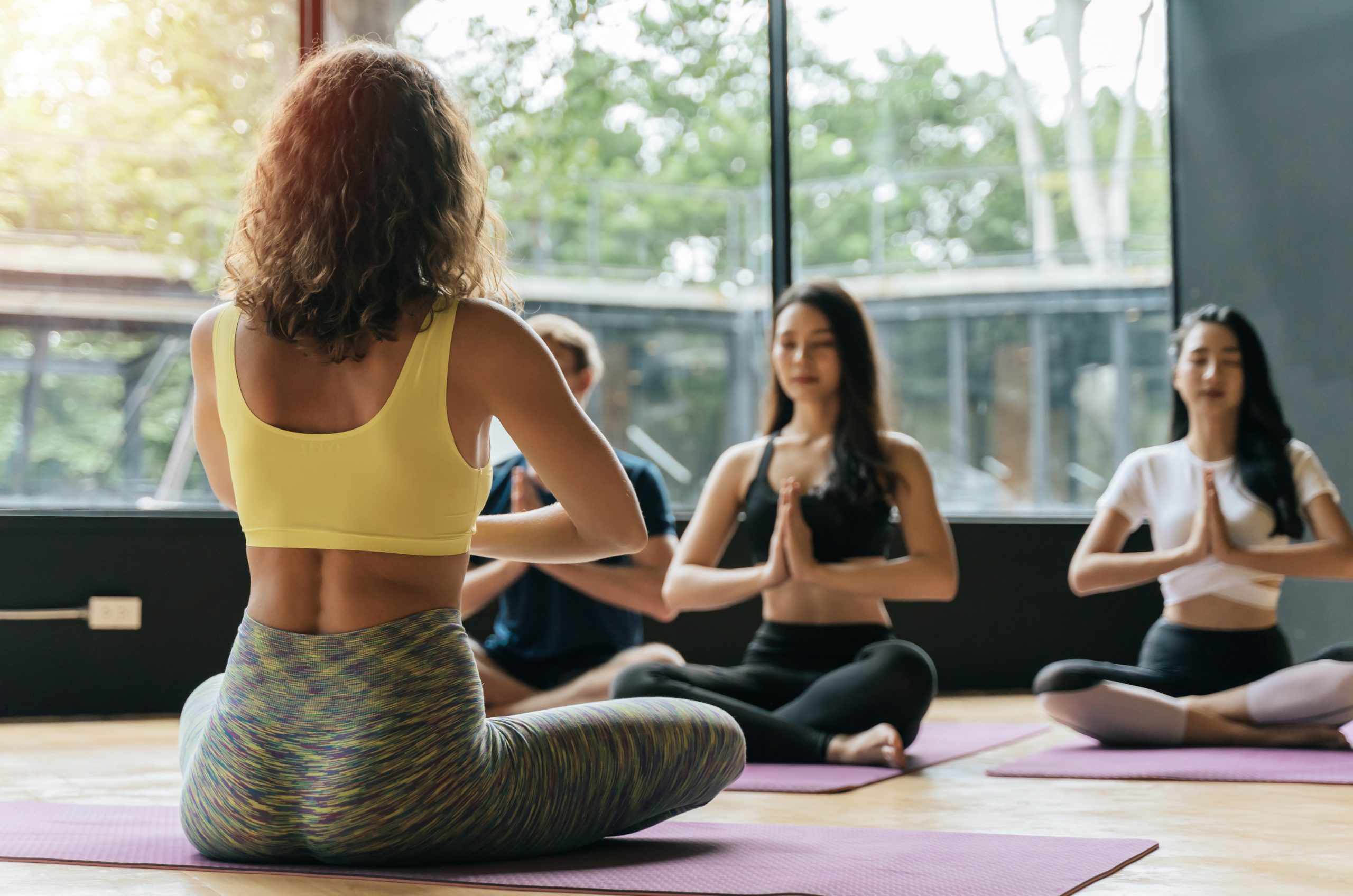Although the Sanskrit name for sitting in a basic cross-legged position, Sukhasana, translates to “Easy pose,” sitting still with crossed legs can actually prove to be quite challenging. Since a comfortable seat is the foundation for many yoga asanas, as well as for pranayama and meditation, it’s worth the time to explore different expressions of the cross-legged position in order to find a seat that actually does put you at ease for your practice.
How and where to cross the legs
Everybody’s body is unique in structure and flexibility, so there is no one-size-fits-all guideline for sitting with crossed legs. However, there are a few common leg variations that you can use as a base for finding comfort.

The most manageable way for most to sit cross-legged is indeed in Easy pose, with feet resting underneath the knees or calves (in the manner that children commonly learn to sit “Indian style” on the floor). If this creates tension in your hips, it may feel better to let your legs rest a bit further away from your body instead of tucking them in close to your groin.
A second option is to cross legs at the ankles or calves so that both shins lie on the floor, one in front of the other. Although very similar to Easy pose, this leg variation is different enough that it’s known as Accomplished pose (or Siddhasana). (Please note that despite its name, no seated posture – or any other posture, for that matter – is actually more “accomplished” or advanced than any other!)

If you’re more open in the hips, you might find that placing one foot on top of the opposite thigh, near the hip crease (known as Half Lotus pose or Ardha Padmasana), or placing each foot into the opposite thigh (Full Lotus pose or Padmasana) provides a more stable seat for your practice. Although it can be tempting, it’s important not to push your body into a shape that doesn’t feel quite right; Half Lotus and Full Lotus both require flexibility throughout the hips and can cause problems in the knees, ankles and lower back, if your body is not ready (or anatomically built) for sitting in this way.
Use of props to find comfort
In any cross-legged position, it’s recommended to elevate the hips over the knees, which can be facilitated by sitting on the front edge of a cushion, a folded blanket, a bolster or other prop. This helps to tip the pelvis slightly forward, allowing the hip flexors to relax. It also prevents a lot of tingly legs and feet, since gravity and blood circulation are working together when the legs are sloped downward.
Feel free to add additional padding underneath the ankles, knees or thighs as you see fit.
Alternatives to crossed legs position
Sitting should not be an unpleasant experience, so if you’ve tried the options above and are experiencing pain or discomfort (or if you’re sitting on a pile of cushions, but still can’t manage the downward slope from hip to knees), consider another seated posture.

For those that prefer to sit on the ground, kneeling in Hero pose (Virasana) is another great option for a comfortable seat. Again, feel free to use blankets or cushions, not only under your knees and feet but also between your calves and your sit bones to support your lower back, find a straight spine and take weight-bearing pressure off of your lower body. Sitting on a block or bolster instead of the heels can also help to achieve comfort in this position.
If you’re planning to sit for meditation or for other practices that require committing to a seat for a longer length of time, or if your body is not comfortable on the floor, consider sitting on a chair or meditation bench.
Alignment cues for comfort
In cross-legged positions, it generally feels more natural to keep either left in front of right or right in front of left. While it’s nice to alternate legs to keep your body feeling balanced, it can be helpful to get used to sitting cross-legged in the way that feels instinctive
In any seat, it is important that you’re able to lengthen throughout your spine and maintain the natural curve of your lower back. To remedy the urge to slouch or round in the lumbar area, try boosting your seat with an additional cushion or sitting against a wall for support.
Before finding stillness, take a moment to rock from side to side, making sure that both sit bones are evenly exposed to whatever it is that you’re sitting on and to find a place that feels even, front to back and left to right, with your shoulders directly over your hips. With an open chest, let your shoulders fall away from your ears, gently tuck your chin and rest your hands comfortably on your upper legs or in your lap. Finally, check that your body and mind are in a relaxed state, not holding onto any unnecessary tension.
Finally, keep in mind that when it comes to an ideal seat, the only goal is finding what feels best for your body.
What is your go-to position for a comfortable seat and what modifications have you made to this position throughout time? However you sit, may it bring ease and comfort to your life!


















Leave a Reply